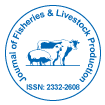Our Group organises 3000+ Global Conferenceseries Events every year across USA, Europe & Asia with support from 1000 more scientific Societies and Publishes 700+ Open Access Journals which contains over 50000 eminent personalities, reputed scientists as editorial board members.
Open Access Journals gaining more Readers and Citations
700 Journals and 15,000,000 Readers Each Journal is getting 25,000+ Readers
Journal of Fisheries & Livestock Production peer review process verified at publons
Indexed In
- Index Copernicus
- Google Scholar
- Sherpa Romeo
- Open J Gate
- Academic Keys
- Electronic Journals Library
- RefSeek
- Directory of Research Journal Indexing (DRJI)
- Hamdard University
- EBSCO A-Z
- OCLC- WorldCat
- Scholarsteer
- SWB online catalog
- Virtual Library of Biology (vifabio)
- Publons
- Euro Pub
- Cardiff University
Useful Links
Recommended Journals
Related Subjects
Share This Page
Enhanced in vitro fermentation parameters of guinea grass ecotype â??Aâ?? (Panicum maximum) and rice straw (Oryza sativa) with supplementation of exogenous fibrolytic enzymes
International Conference on Livestock Nutrition
Sathya Sujani
Posters-Accepted Abstracts: J Fisheries Livest Prod

 Spanish
Spanish  Chinese
Chinese  Russian
Russian  German
German  French
French  Japanese
Japanese  Portuguese
Portuguese  Hindi
Hindi 